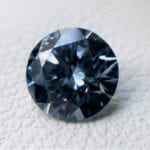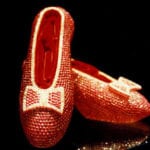 Movies and TV
Movies and TV  Movies and TV
Movies and TV  Humans
Humans 10 Times Scientists Were Absolutely Sure… and Absolutely Wrong
 Our World
Our World 10 Pivotal Moments for Life on Earth
 Movies and TV
Movies and TV 10 Most Realistic Medical TV Shows of All Time
 Creepy
Creepy 10 Eerie & Mysterious Ghosts of the Pacific Coast
 Weird Stuff
Weird Stuff 10 Typos That Accidentally Changed History
 History
History 10 Times Trickery Won Battles
 Technology
Technology 10 Awesome Upgrades to Common Household Items
 Misconceptions
Misconceptions 10 Hilarious (and Totally Wrong) Misconceptions About Childbirth
 Weird Stuff
Weird Stuff 10 Warning Labels That Exist Because Someone Actually Tried It
 Movies and TV
Movies and TV 10 Zombie Movies That Will Actually Terrify You
 Humans
Humans 10 Times Scientists Were Absolutely Sure… and Absolutely Wrong
 Our World
Our World 10 Pivotal Moments for Life on Earth
Who's Behind Listverse?

Jamie Frater
Head Editor
Jamie founded Listverse due to an insatiable desire to share fascinating, obscure, and bizarre facts. He has been a guest speaker on numerous national radio and television stations and is a five time published author.
More About Us Movies and TV
Movies and TV 10 Most Realistic Medical TV Shows of All Time
 Creepy
Creepy 10 Eerie & Mysterious Ghosts of the Pacific Coast
 Weird Stuff
Weird Stuff 10 Typos That Accidentally Changed History
 History
History 10 Times Trickery Won Battles
 Technology
Technology 10 Awesome Upgrades to Common Household Items
 Misconceptions
Misconceptions 10 Hilarious (and Totally Wrong) Misconceptions About Childbirth
 Weird Stuff
Weird Stuff 10 Warning Labels That Exist Because Someone Actually Tried It
10 Everyday Things Made with Animal By-Products
We should all know that mass production by giant corporations has resulted in a great many questionable ingredients finding their way onto and inside of us. It’s rare these days to use any product with only one or two ingredients, as most dedicate the majority of their ingredient list to long biochemical names with no context.
However, what may still surprise you is just how many of those additives come from animals and how manufacturers use those animal by-products to produce almost every object you interact with daily. No matter what the object is, there is a good chance that it needed bleaching, preserving, coloring, lubricating, or some other process that used animal products in one form or another. Here are ten of those everyday items surprisingly made with animal by-products.
Related: 10 Products You Aren’t Using The Crazy Way Their Creators Intended
10 Beer with Fish Guts
Isinglass is a crystalline-appearing substance harvested from the swim bladders in fish. You can almost tell its source by looking at it; the thin collagen is scaled and looks like fish skin with no other information. You might be surprised, grossed out, unhappy, etc., to learn that the fish stuff has many non-fish uses, most famously in beer and wine.
Brewers and vintners use isinglass during the clarification stage of their production, as the material helps filter out solids and impurities that would otherwise be in the liquid. Essentially, brewers use dried fish organs to pull clumps of yeast and protein out of your drink. Most non-brewers, if they’ve heard of isinglass, learned of it in 2015, when Guinness announced they would phase out the substance, thus making Guinness beer fully vegan.
So the next time you drink your glass of wine and wonder why it tastes fishy, it’s in your head because you just read this passage.
9 Fertilizer with Powdered Bones
After the obvious cuts of meat are harvested for human consumption, slaughterhouses begin a second harvest, which could equally be described as “using every part of the buffalo” and “squeezing out every last dime.” Most parts of most food animals have some use or another, and in the case of the bones, once ground into a powder, that use is as an excellent fertilizer.
Ground bones, known as bone meal, are unusually high in phosphorus and calcium. If supplemented with nitrogen and potassium, it becomes an effective fertilizer for plants—and from a more natural source than most, to boot. There is also a perverse and fitting poetry in using herbivore bones to feed plants.
8 Sugar, Also with Powdered Bones
Another use for bones is as a decolorizing filter in sugar, or in other words, the thing that makes cane sugar white.
Instead of bone meal, however, the bone used in filtration and decolorization must be converted into bone char. By burning bone just right in a sealed, low-oxygen container, the bone becomes the black, porous material known as bone char. Used in enough quantity, the black char sucks the color from sugar and leaves it a bright white. In addition, it filters out impurities, which is why it is also used to filter drinking water. Probably the least surprising use for the dark black powder that is bone ash is as a black pigment in painting.
7 Wooden Furniture with Bug Secretions
Shellac is used in so many products that it’s impossible to list even a fraction here. Though completely natural, it possesses many of the properties of plastics and can perform a range of functions. As it makes an effective primer, sealant, stain, and varnish, shellac is popular in woodworking. It is also made by colonies of thousands of tiny insects that huddle together on tree branches and collectively secrete it as an ooze from holes on their bellies.
Lac bugs secrete lac, which becomes sticklac, then becomes seedlac, which finally becomes shellac. The initial harvest of the lac remains surprisingly traditional and simple. It begins by planting the bugs on a tree branch, waiting for them to goo it up, and then cutting the branch off. From there, it is purified, ground, and washed, where the insect gloop finds its way onto wooden furniture across the world.
6 Bread with Hair and Feathers
Natural bread has an impractically short shelf life. To combat that, modern, mass-produced breads use an assortment of preservatives and other chemicals to push shelf life to the maximum. One such life-extender is the amino acid L-cysteine. For dietary purposes, you can find it plentifully in most protein-rich foods. But for the giant corporations who churn out millions upon millions of bread loaves and similar products, a cheaper, more widely available source is required. Lucky for them, any number of animals shed hair and feathers in bulk.
Therefore, there is likely hair and feathers in your bread, bagels, tortillas, and assorted grains. Contrary to many sensational reports, however, the odds of it ever being human hair are extremely low—but don’t count it out. However, most of the L-cysteine extracted from hair comes from pigs, and most of the remaining hair comes from other livestock. The feathers come from pretty much any bird raised for meat, so chicken and turkey are the most likely culprits.
5 Plastic Bags with Cow Fat
Tallow is a form of rendered animal fat, usually cow, that has found its way into or on a surprising amount of household products. The tallow is almost entirely made up of fats, which makes it both a useful fuel and lubricant, among other things.
It can be burned as candle wax, turned into biodiesel, and even used as jet fuel. But as a lubricant, it’s everywhere. Multiple new issuances of paper currency, such as the current Euros, have released bills covered in tallow. It allows the bills to separate more easily, slide in and out of receptacles, and even guard against static. For the same reasons, tallow finds its way onto the surface of most plastic bags, helping users pull them apart (still a bit of a chore).
4 Fireworks with That Same Cow Fat
The most common fats in tallow, like stearic acid, also find their way into dozens of more household products. At this point, you should note, in real life, how many more times you touch cow fat than you thought you did.
One of the more niche, but also cooler, uses for stearic acid is a waxy coating that prevents oxidation. As such, stearic acid is used inside fireworks to coat and protect the various metal powders—the substances that create the explosions and colors.
3 Perfume with Beaver Musk
It is true. Many high-end brands such as Chanel, Lancôme, and others, use a sticky yellow goo secreted by beavers in their perfumes. The compound, known as castoreum, emerges from an opening beneath the beaver’s tail, which has been repeatedly mistaken for urine or even poop. In reality, it is just a musk, albeit musk from a beaver’s butt.
Castoreum is known to produce an odor reminiscent of leather, so it makes its way into many leather-based perfumes. Manufacturers also use it as a vanilla flavoring in food, though more than 99% of vanilla flavoring today instead comes from vanillin.
2 Condoms with Milk
Any condom made from latex, which is most condoms, may contain casein, the dominant protein in milk. According to latex manufacturers, casein is used as a “latex compounding ingredient” and “viscosity modifier,” meaning the protein helps the latex to keep its shape and resist tears.
A few years ago, this information became more widely known, due largely to an online post from one of the naturopaths working for Gwyneth Paltrow’s company Goop. Though not entirely Goop’s fault, it caused a mini panic among the lactose intolerant. If you are one, have no fear: while yes, the presence of casein makes latex condoms non-vegan, it is virtually guaranteed not to cause an allergic reaction. If anything, the latex itself is much more likely to cause a reaction.
1 Everything Red with Crushed Bugs
Think for a second about the color of the food you eat. Of the, say, red foods, a few are (more) naturally that color—apples, tomatoes, strawberries, etc. Then there are those which are clearly not red (or even found at all) in nature—most red drinks, candies, yogurts, ice creams, cakes, donuts, pies, frostings, dyes, etc. Of that second category, there is a good chance that they were made red with the powdered bodies of thousands of dead insects.
One of the most popular food colorings is carmine, a darker, richer red that comes from crunching up tiny insects known as cochineals. Carmine is considered a safer form of red dye than its competitors and one which resists heat and light well. Because of this, it’s used almost everywhere—not just in foods but in lipsticks, paints, and clothes. That means that the red portion of the world you inhabit was built in part from the corpses of billions of dead bugs. I wonder about the other colors…








